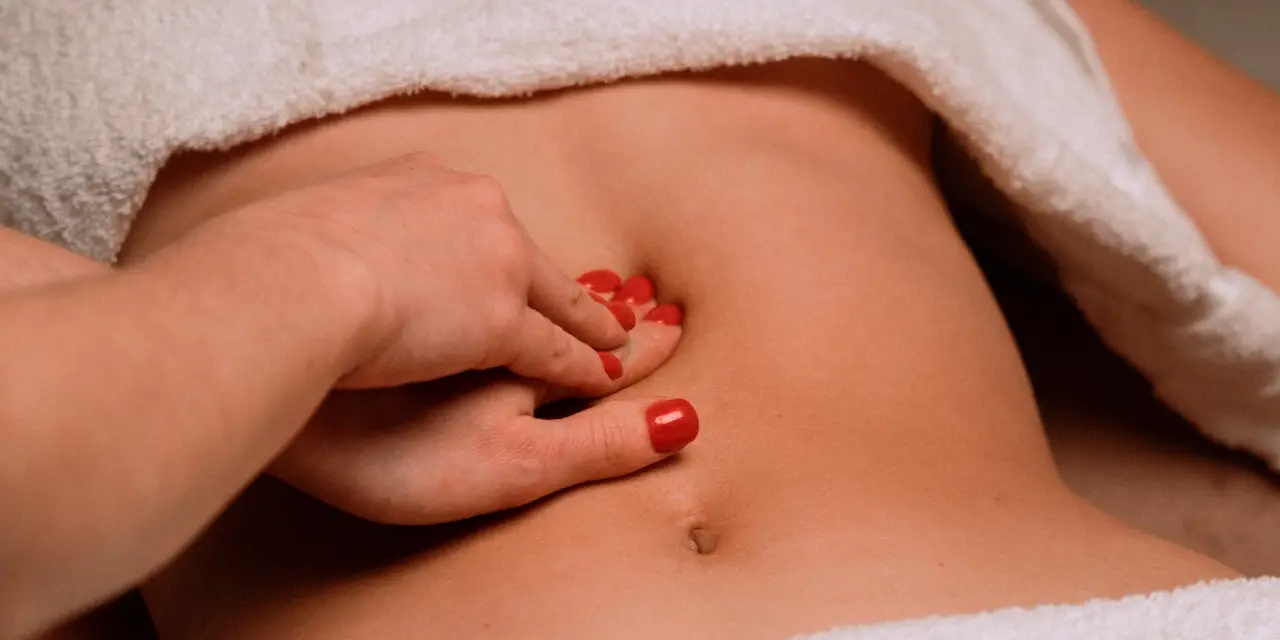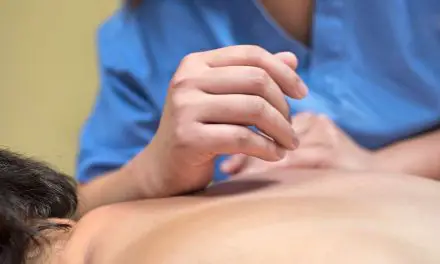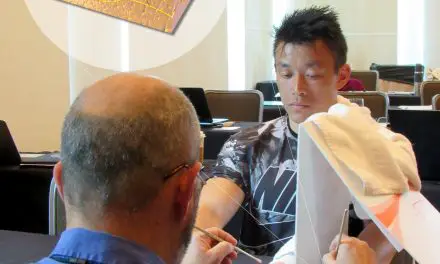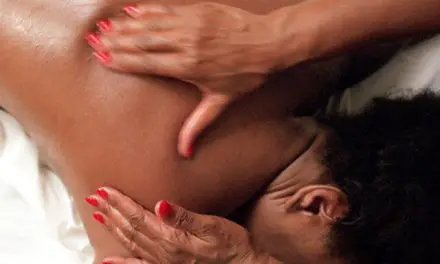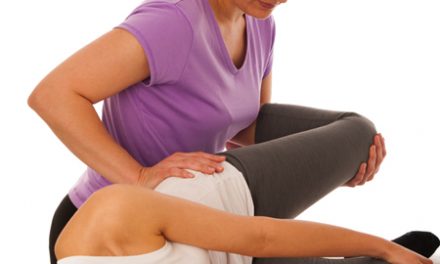An inguinal hernia occurs when a weakness in the lower abdominal wall (at the inguinal canal) allows the contents of the abdomen to bulge through the rupture. “Hernia,” from the Latin for “rupture,” is used to describe several conditions in your body, and inguinal hernia is one of the most well-recognized type.
Inguinal hernias can cause groin and/or pelvic pain. They often show up when you lift a heavy object or participate in strenuous activity and disappear when you lie down. Most inguinal hernias are not dangerous or life-threatening, but complications can develop if they’re left untreated. If the herniation gets too large, portions of your intestine can get trapped or “strangulated” and lose the blood supply they need to function properly.
It’s possible to push the protruding organs back into place with gentle massage and pressure to the area. Keep reading to learn more about the signs and symptoms of an inguinal hernia and how to massage an inguinal hernia to get the contents back into your belly.
Inguinal hernia symptoms
Although it’s more common in men, inguinal hernia can occur in women, too. A hernia may go undiagnosed in women because the typical lump or bulge associated with the problem may not be present.
The most common symptoms of an inguinal hernia are:
- a lump or bulge on either side of your pubic bone that sticks out more while standing, coughing, or lifting an object;
- pain in the groin or pelvic region;
- burning or aching pain near the area of the lump/bulge;
- Groin weakness
Types of inguinal hernia
There are two types of inguinal hernias: direct and indirect.
Direct inguinal hernias are the ones you hear about most often.These ruptures of the lower abdominal wall are caused by straining or weakness in the area. Direct hernias typically occur in men but it can happen in women or children.
Indirect inguinal hernias are a type of birth defect where there is a hole in the abdominal wall.These are found mostly in premature babies and newborns.This type can be found early in life or may not be diagnosed until adulthood.
Can massage “push” the inguinal hernia back in?
It’s possible to self-massage a herniation back into place. However, Jocelyn Derlorme, a registered massage therapist in Victoria, B.C. suggests you use caution when taking treatment into your own hands.
“[There’s] no clear criteria as to what a ‘minor’ herniation is which can be problematic for the public,” she said. “If there’s no clear guidelines to assist someone in making an informed decision about their body, they cannot properly assess if they are at a higher risk for complications and/or harm.”
The decision to massage your own hernia (or let someone else massage it for you) can be dangerous. Delorme identifies the following risks when perform the procedure yourself:
- Promotion of structural failure in the fascia, muscles, ligaments, or other tissue;
- Compromised tissue may be more reactive, sensitive, or painful;
- Pushing on the herniation may elicit a protective reaction (think muscle guarding) or spasm that could compromise the neurovascular supply to the organs or tissues of the region;
- Spasm may cause the opening to become more narrow and stop or slow the digestive process as it moves through the intestines.
A quick online search will find information on how to massage your hernia back into your abdomen. From Delorme’s perspective, the problem with these content is that they can’t possibly consider individual differences. She is particularly concerned with people who have connective tissue disorders, such as hypermobility or Ehler-Danlos syndrome, where massage may potentially cause more harm to the already compromised tissues.
Also, there’s a lack of information on load management strategies if you have a hernia. Strategies to manage the increase of internal abdominal pressure, such as coughing, sneezing, and toileting would be beneficial to the public, Derlome suggested.
Inguinal hernia massage contraindications
There isn’t much research on using massage to treat an inguinal hernia. In a lot of sources, a hernia can actually be a contraindication for massage! Because of this scarcity, be mindful of a few things when performing this treatment.
Dr. Payton McWilliams, owner of The Healthy Woman, LLC, cautions that people with a history of kidney failure or congestive heart failure should steer clear of massage. “You don’t want to overload the lymphatic or venous systems in people who have sub-optimal organ function,” she said. “Those conditions are already so painful that these patients are not likely to tolerate even more pressure in the area.”
McWilliams treads lightly when using massage to treat the abdominal area in women with endometriosis or chronic pelvic pain. Women who are currently pregnant or have recently delivered via a C-section should also wait for a minimum of six to eight weeks until their bodies are ready for massage therapy, especially over the incision used for a c-section. She suggests that you check with your physician to be on the safe side if you develop a hernia during or after pregnancy.
Inguinal hernia treatments
If massaging your inguinal hernia back into place is unsuccessful, there are other options. Most often, a hernia that does not resolve with conservative treatment will be referred to a surgeon. If the tissue becomes trapped or strangulated, the decision to do surgery becomes much more urgent.
If you need surgery, you and your physician will determine if an open repair or laparoscopic repair is your best option.
Surgery
More than 20 million people worldwide undergo inguinal hernia repair each year. The recurrence rate of hernia after surgery is greater than 10% regardless of which repair technique is used. A large meta-analysis comparing laparoscopic versus open repair in those with recurrent hernias found that the minimally invasive procedure (laparoscopy) was associated with faster recovery and less complications.
Both surgical procedures are performed under general anesthesia. In an open repair, a cut is made to allow room for the intestines to move back into the belly. After the internal organs are back in place, a piece of mesh is used to reinforce the weakened area of the abdominal wall.
In laparoscopic repair, a small tube with a camera on the end is inserted through a small cut in the abdomen so that the surgeon can see the inside of your body. Using the images from the camera, the surgeon puts the organs back in place.
Exercise
You can continue to exercise with a inguinal hernia but some modifications may be necessary. First and foremost, you should avoid exercises that overstretch the front side of your body.Some examples of these exercises would be yoga poses such as crescent, camel, or dancer’s pose.You should also stay away from intense weight training (anything that causes you to bear down during effort), lunges, planks, bridges and other positions that lengthen the muscles of the abdominal wall.
If you want to continue your exercise routine despite having a hernia, stick to low impact activities such as walking, biking, or swimming.
Who is at risk for inguinal hernia?
Several risk factors have been identified in the diagnosis of inguinal hernia.They can be divided into internal or patient risk factors and external risk factors.
Internal risk factors:
- Male
- Older age (75-80 years!)
- Connective tissue disorders
- Low body mass index (BMI)
- Genetics
External risk factors:
- Heavy lifting
- Prolonged standing/walking
- Increased intra-abdominal pressure (coughing, jumping, bearing down)
- Physically demanding work
You can’t control genetics or biological sex, but there are some things you can do to reduce your risk of developing an inguinal hernia. Using proper form when performing physically demanding work and heavy weight lifting exercises is key to keeping your body healthy. Managing your breathing during strenuous work and exercise can also reduce the stress through your abdominal wall.
Resources
Inguinal Hernias: Causes, Symptoms and Treatment
Overview of treatment for inguinal and femoral hernia in adults
Inguinal Hernia in Babies & Children: Symptoms & Treatment

Penny Goldberg, DPT, ATC
Penny Goldberg, DPT, ATC earned her doctorate in Physical Therapy from the University of Saint Augustine and completed a credentialed sports residency at the University of Florida. She is a Board Certified Clinical Specialist in Sports Physical Therapy.
Penny holds a B.S. in Kinesiology and a M.A. in Physical Education from San Diego State University. She has served as an Athletic Trainer at USD, CSUN, and Butler University.
She has presented on Kinesiophobia and differential diagnosis in complicated cases. Penny has published on returning to sports after ACL reconstruction and fear of movement and re-injury.
Outside of the clinic, Penny enjoys traveling, good cooking with great wine, concerts, working out and playing with her dogs.

